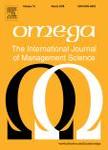版权所有:内蒙古大学图书馆 技术提供:维普资讯• 智图
内蒙古自治区呼和浩特市赛罕区大学西街235号 邮编: 010021

作者机构:Coventry Univ Sch Strategy & Leadership Fac Business & Law Coventry W Midlands England Shahed Univ Dept Ind Engn Fac Engn Tehran Iran RMIT Univ Sch Sci Melbourne Australia Aalto Univ Sch Sci Dept Math & Syst Anal Espoo Finland
出 版 物:《OMEGA-INTERNATIONAL JOURNAL OF MANAGEMENT SCIENCE》 (国际管理科学杂志)
年 卷 期:2021年第104卷
页 面:102480-102480页
核心收录:
学科分类:12[管理学] 120202[管理学-企业管理(含:财务管理、市场营销、人力资源管理)] 0202[经济学-应用经济学] 02[经济学] 1202[管理学-工商管理] 1201[管理学-管理科学与工程(可授管理学、工学学位)]
主 题:Asset protection Location routing problem Stochastic programming Frank-Wolfe Progressive Hedging method Wildfires
摘 要:In this paper, a two-stage stochastic programming model is developed for the asset protection routing problem (APRP) to be employed in anticipation of an escaped wildfire. In this model, strategic and tactical decisions are considered in a two-stage setting. The locations of protection depots are determined, taking into account the routing decisions under different possible scenarios. To solve the proposed model, the Frank-Wolfe Progressive Hedging decomposition approach is employed. A realistic case study set in south Hobart, Tasmania, is considered. In this study, the scenarios for uncertain parameters are generated based on real data, considering different sources of uncertainties such as wind direction and speed and total monthly rainfall. Computational experiments have been conducted to demonstrate the solution algorithm s efficiency in solving the asset protection routing problem with a two-stage stochastic framework. The numerical results suggest that more assets with higher values can be protected by considering the proposed two-stage stochastic programming model. The value of the approach is particularly significant where resources are limited, and uncertainty levels are high. Moreover, the model and solution procedure can be applied to other disaster situations in which protection activities occur. (C) 2021 Elsevier Ltd. All rights reserved.